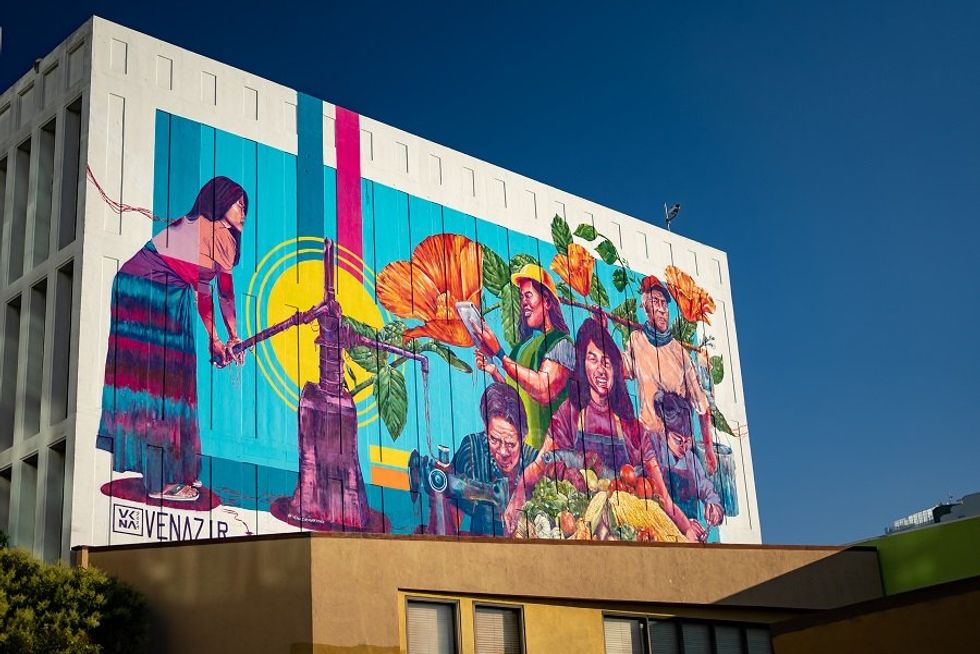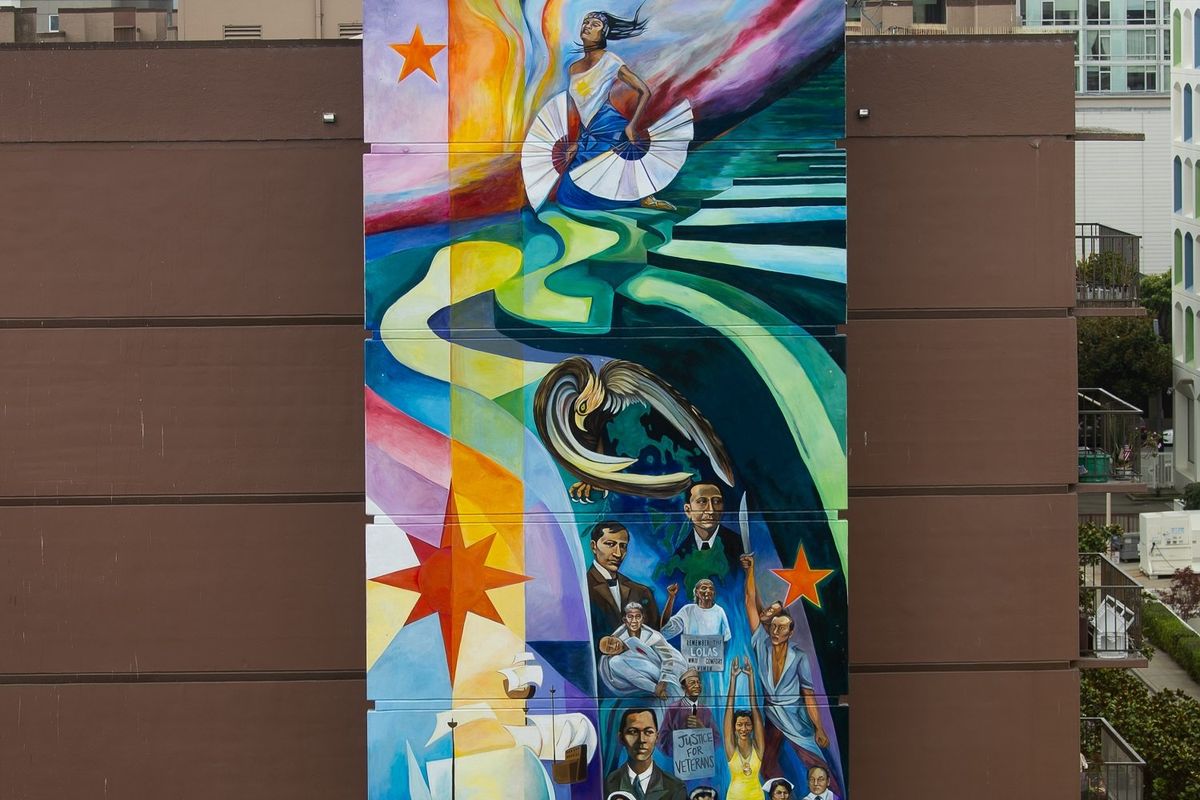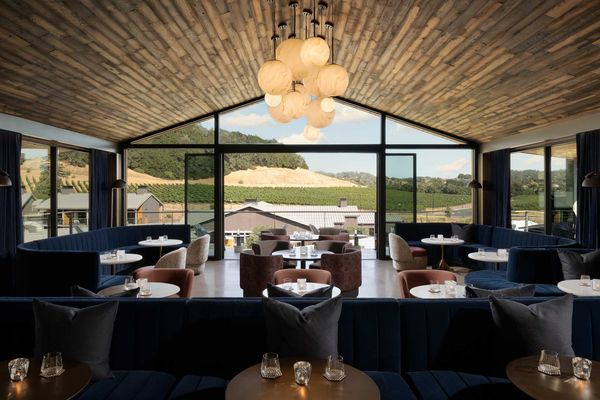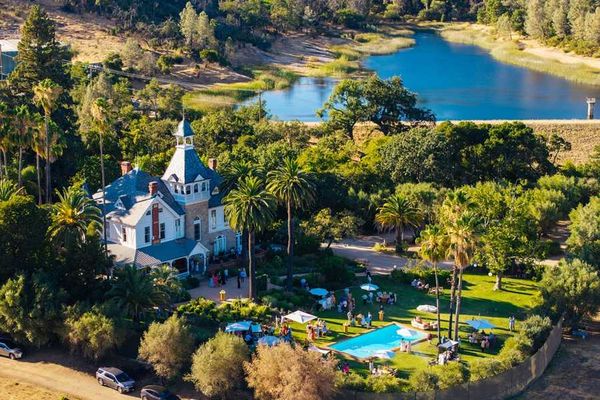SoMa Pilipinas is on a mission to bring the streets of downtown San Francisco’s Filipino Cultural Heritage District alive with vibrant color—and soon they’ll unveil the most precious work in their growing collection of public art.
It won’t be the first time the Ang Lipi ni Lapulapu mural rises above the neighborhood. It’s been 40 years since artist Johanna Poethig designed the public work of art, the first in the country to celebrate Filipino-American immigration. Restoring and updating its faded images decades later brought both her, and the mural’s themes, full circle.
“This is a historical mural, it’s telling a story,” says Poethig. “Filipino Americans, how long they’ve been here and their contribution, is under-appreciated. Immigration continues to be a trigger issue, so bringing this story back and focusing a light on it again [is more important than ever].”
Inspired by the traditions of Diego Rivera and the WPA movement, and designed in conversation with the community, the 90-foot tall Lapulapu integrates the figures and elements that have had a hand in shaping the Filipino American experience. The mural moves through the centuries, from Indigenous resistance to early European settlement and the galleon trade (which brought luxury goods from Asia to the Americas between the 16th and 19th centuries), to the agricultural workers and healthcare providers that made their homes here in the 20th century.
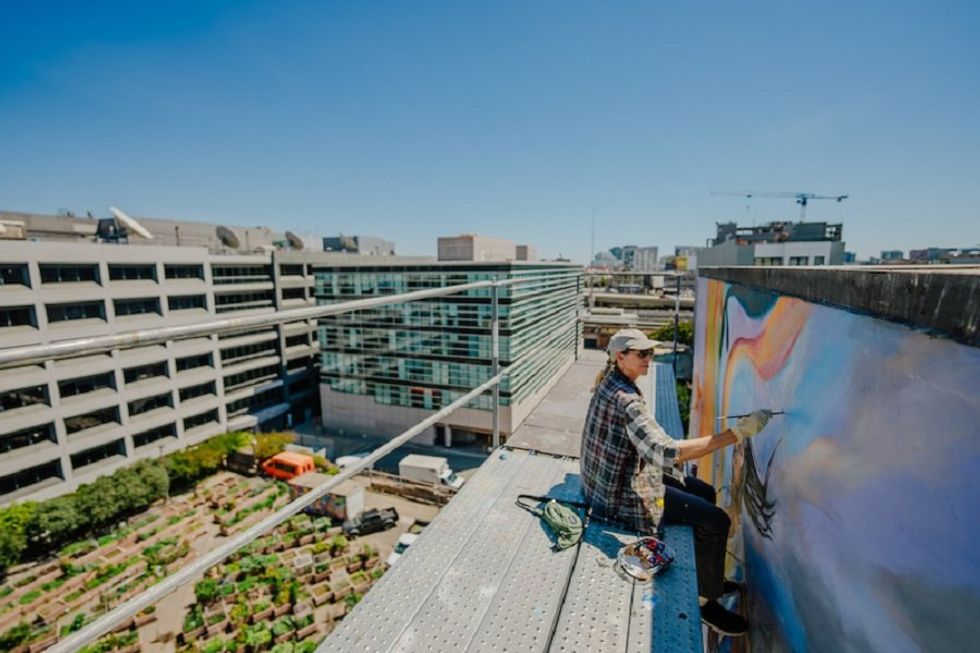
“I added a veteran to honor those who protested for so many decades to get what they were owed from the U.S. government, and a Lola, a “comfort woman,” from World War II as a sort of elder, not only of the Filipino community but of all of us protesting the violence against women,” says Poethig.
The first Asian-American Olympic gold medalist, diver Vicki Manalo Draves, who was raised in SoMa, appears; so too does famed Filipino boxer, Pancho Villa. Together they form a narrative of community strength and perseverance that “has maintained its relevance for all these decades and will live on,” Poethig says. “I’ll be dead and it’ll still be there.”
The restoration of Ang Lipi ni Lapulapu is one of more than 30 public works SoMa Pilipinas plans to reveal by 2025. Several have already been completed, including two new murals near the intersection of Russ and Folsom where the hope is to erect a “gateway” to the Filipino Cultural Heritage District.
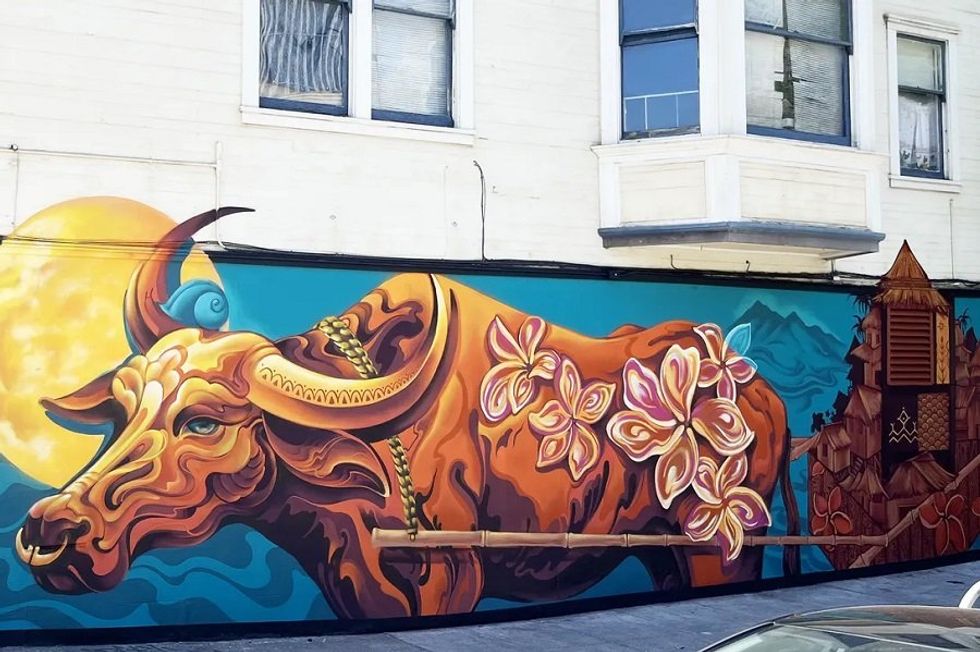
Both touch on themes that weave together past, present, and future: the “Carabao Mural” by Franceska Gamez and Cece Carpio, in which a buffalo adorned with flowers pulls a traditional village scene, and “Pagsasama-Sama” by ChiChai Mateo, a woman-focused work that “really lifts up the grandmas, the mothers, the young women who are activists and cultural bearers,” says Raquel Redondiez, director of SoMa Pilipinas.
Many of the works are, in fact, by those Filipina culture bearers. The artists, including Oakland-based Hueman (aka Allison Torneros), whose color-drenched history-themed mural Our Home of Sampaguitas and Dahlias hangs above 6th Street, and pioneering Filipino street artist Venazir Martinez, whose Ani-Harvested Hopes on 5th Street is her first in the U.S., are part of a “pipeline” of community creativity the organization is helping to create.
We want “to show that we’re still here—not just here, but doubling down on San Francisco, on downtown, and really contributing to the revitalization of the area,” says Redondiez.
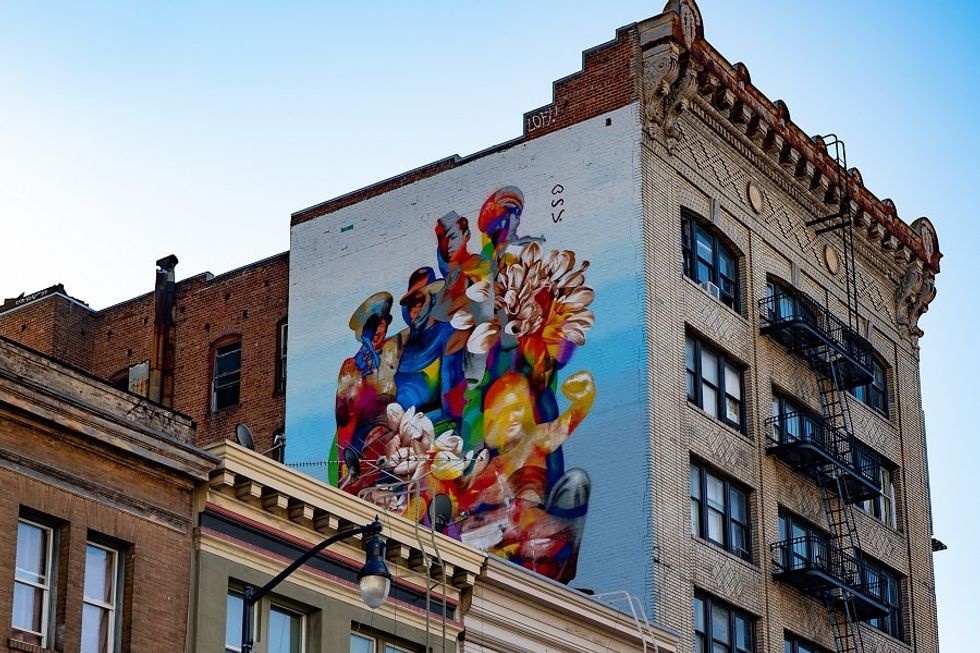
SoMa Pilipinas’ live Google map, in which the artists have included descriptions of their work, is already available for exploration of the Filipino Cultural Heritage District’s murals on foot. This summer, they also kicked off expeditions through the urban gallery by Mahal jeepney, and the organization is working on a new program that will pair a guided tour of the murals with visits to several of the neighborhood’s Filipino restaurants.
Meanwhile, SoMa Pilipinas will show up big at SoMa Sunday Streets on October 13, not just with the official unveiling of the Lapulapu mural, the “crown jewel of their public art program,” but with cultural dancing, music, and an opening by SoMa Pilipinas poet laureate, Oscar Peñaranda. They’ll host a hands-on parol workshop too, where visitors can make the colorful paper lanterns displayed during the annual Parol Lantern Festival at the Yerba Buena Center for the Arts in December.
“Our effort is really to educate the broader public about the really rich history of the Filipino community dating back to the turn of the century,” says Redondiez.“ For the Filipino community, it’s really about being able to tell our stories.”
// SoMa Sunday Streets is October 13 from 12pm to 5pm; learn more about SoMa Pilipinas’ public art project and ongoing work to revive the Filipino Cultural Heritage District at somapilipinas.org
